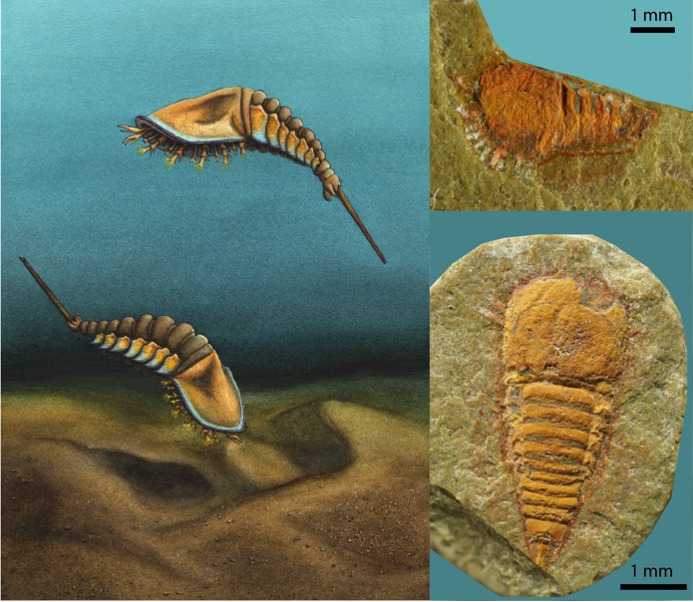Modern scorpions, spiders and horseshoe crabs belong to the vast lineage of arthropods, which appeared on Earth nearly 540 million years ago. More precisely, they belong to a subphylum that includes organisms equipped with pincers used notably for biting, grasping prey, or injecting venom –the chelicerae, hence their name chelicerates. But what are the ancestors of this very specific group? This question has puzzled paleontologists ever since the study of ancient fossils began. It has been impossible to identify with certainty any form among early arthropods that shared enough similarities with modern species to be considered ancestors. The mystery was further compounded by the lack of fossils available for the key period between -505 and -430 million years ago, which would have facilitated genealogical investigation.
In an article led by PhD student Lorenzo Lustri at the University of Lausanne and published today in Nature Communications we recognize the synziphosurine from the ~480 million-year-old Fezouata Shale of Morocco a a pivotal fossil that fills the gap between modern chelicerates and species from the Cambrian period (505 million years ago). Fossils from the Fezouata Shale, including that synziphosurine, were discovered in the early 2000s. Many fossils have already undergone extensive analysis, yet despite being one of the most most abundant fossil in the deposit, this one had never been described before. Measuring between 5 and 10 millimeters in size, it has been named Setapedites abundantis. This animal makes it possible, for the first time, to trace the entire lineage of chelicerates, from the appearance of the earliest arthropods to modern spiders, scorpions and horseshoe crabs.

To obtain these results Lorenzo observed more than a hundred specimens, a couple of which were imaged using synchrotron X-ray computed tomography (CT) scanning at the TOMCAT beamline of the Swiss Light Source (Paul Scherrer Institut, Villigen, Switzerland) to reconstruct their anatomy in detail and in three dimensions. I was involved in the supervision of Lorenzo for this chapter of his PhD, and collected and processed the CT data.
By combining a detailed anatomical description of Setapedites abundantis with comparisons to numerous fossil and extant chelicerates as well as Cambrian arthropods, and using robust phylogenetic methods, we establish a new monophyletic clade at the base of Chelicerata, which also includes the Silurian synziphosurines Dibasterium and Offacolus. This new clade links Chelicerata with the Cambrian arthropod Habellia optata from the Burgess Shale, clarifying the origin of chelicerates and particularly the evolution of chelicerate gill opercula, which are shown to have originated from Habelia-like thoracic exopods.

Furthermore, we also identified potential homologies with the problematic vicissicaudatan arthropods, suggesting that Setapedites abundantis might have more secrets to reveal. This could lead to a deeper understanding of the early evolution of the chelicerate group and its relationships with other arthropods whose affinities remain highly debated.
Reference: Lustri L., Gueriau P. & Daley A.C. 2024. Lower Ordovician synziphosurine reveals early euchelicerate diversity and evolution. Nature Communications 15, 3808. Find the article (Open Access) here
